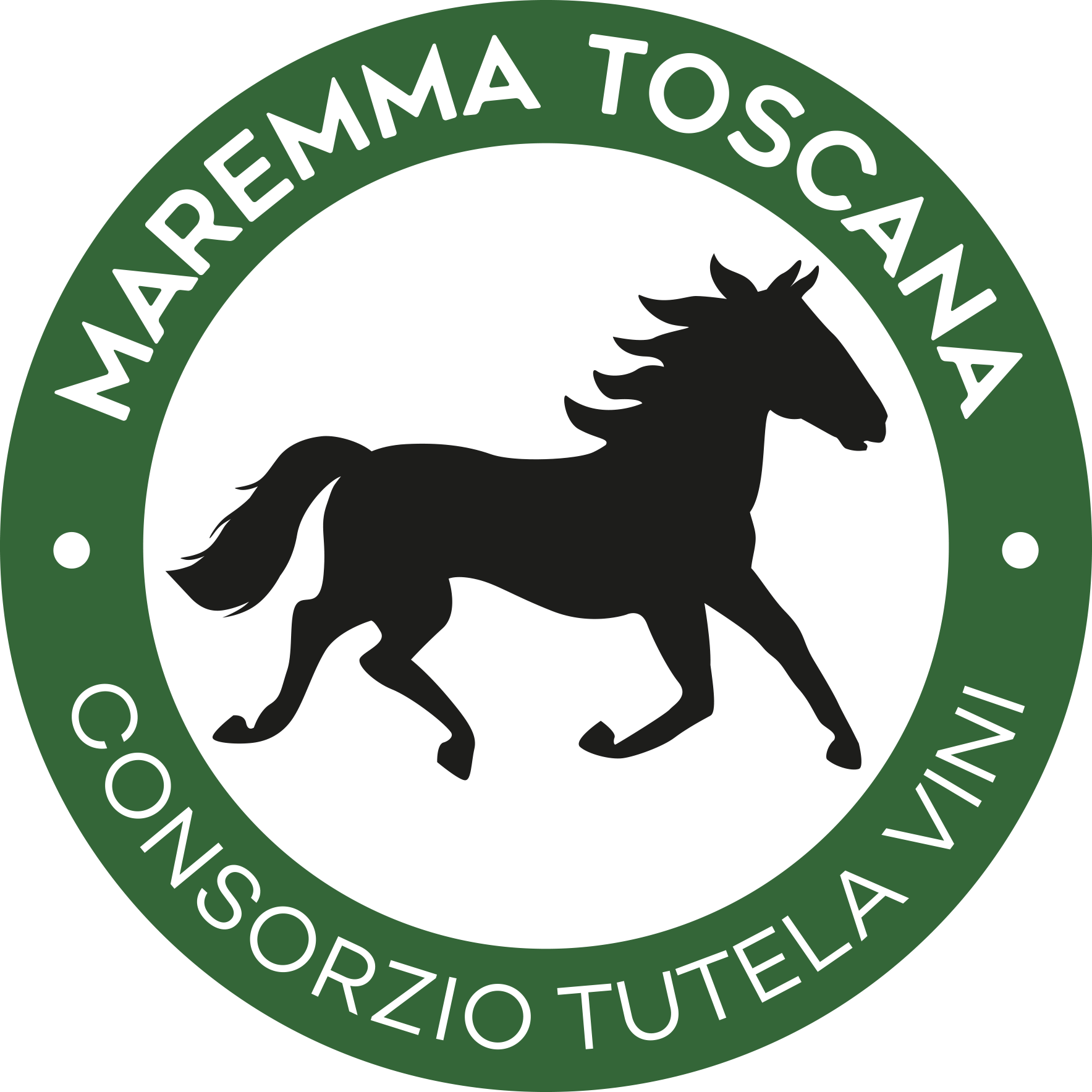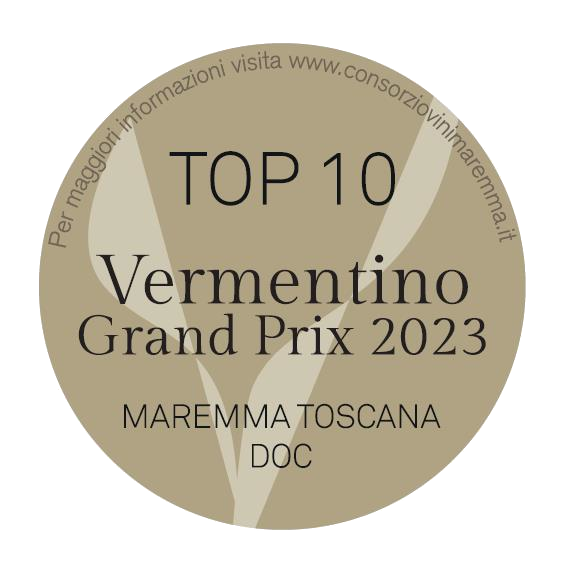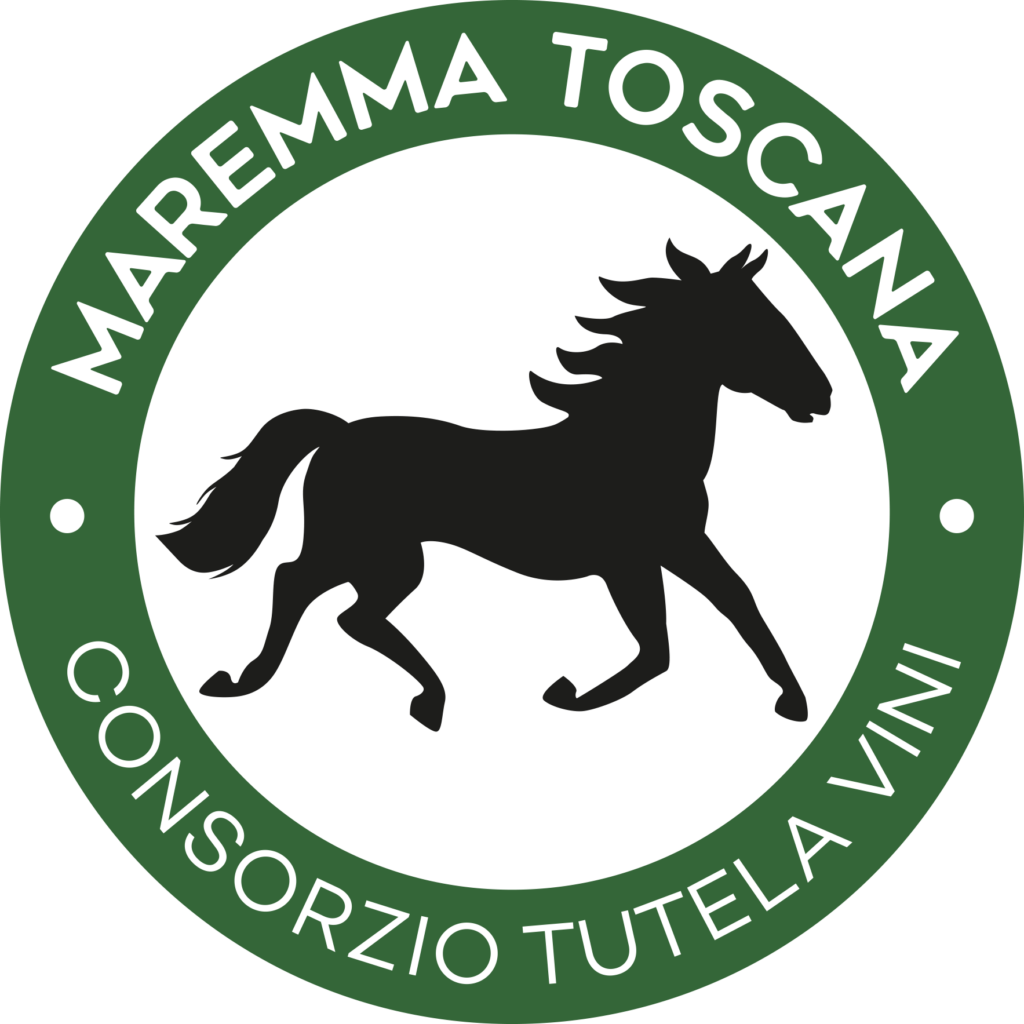Sangiovese
It is the most cultivated vine in Italy, present in many regions of the country, and is the symbol of Tuscan viticulture. Even in Maremma the Sangiovese grape occupies a prominent place although the share of presence in the provincial vineyard has dropped from 56.8% in 2006 to 44.38% in 2021. Today there are about 3,880 hectares distributed in practically all the municipalities of the province, even if the greatest concentration is in the municipalities of Magliano, Scansano and Grosseto, then Cinigiano, Gavorrano, Manciano, Roccastrada and Massa Marittima.
It is also known with the synonyms Sangioveto, Sangiogheto, Brunello, Morellino, Prugnolo gentile, Riminese, San Gioveto, Sanvicetro.
The first documented information on the vine dates back to the end of 1500, albeit in the archaic denomination Sangiogheto. However, it will be necessary to reach the middle of the 19th century to have the first real distinction, based on the size of the berries, that is, between Sangiovese grosso and Sangiovese piccolo, which will subsequently result, according to precise experimental tests carried out starting from 1995, two different biotypes of the same family; in particular, the main biotypes grown in Tuscany and Romagna correspond to the large Sangiovese (primarily Brunello and Prugnolo gentile) while the small Sangiovese is a Sanvicetro cultivated in the Casentino.
Regarding its origin, it is now certain that it has genetic links with the varieties of southern Italy (Sicily, Calabria and Puglia): researches with the help of microsatellites (SSR) have highlighted first-degree relationships with Frappato, Gaglioppo, Nerello mascalese , Mantonicone, Susumaniello and Tuccanese di Turi. A recent genetic study of the viticultural germplasm (2021) carried out by eight scientific institutions and published in the international journal “Frontiers in Plant Science” revealed that Sangiovese would descend from the Strinto porcino vine, one of the main progenitors of the southern vines together with the white Mantonico and the ‘Aglianico.
It is a vine with an average ripening period and considerable vigor, which prefers medium or low fertility soils, of clayey-calcareous nature and rich in skeleton, located in hilly areas.
The wines have an intense ruby color with yellow hints when aged, with a fruity aroma and sensations of blackberries, cherries, strawberries, plums and red fruit jam, with a dry flavor, fairly tannic, full-bodied, with a slightly bitter aftertaste, a little ‘rough but quite harmonious.
Sangiovese wines, if young, go well with the savory first courses of the Tuscan tradition (pici, Maremma tortelli or pappardelle with wild boar sauce), with soups, with typical soups such as acquacotta, pappa al pomodoro, panzanella or ribollita, with fish soups. like cacciucco. The more mature versions are excellent with red meats and ribs, such as Florentine steak, roasts, grills and aged cheeses.
Sinonimi:
Maremma Toscana DOC “Rosso” and “Rosso Riserva” (presence in the minimum limit of 60% alone or together with Ciliegiolo, Merlot, Syrah, Cabernet Sauvignon and Cabernet franc)
Maremma Toscana DOC “Rosato” (presence in the minimum limit of 60% alone or together with Ciliegiolo, Merlot, Syrah, Cabernet Sauvignon and Cabernet franc)
Maremma Toscana DOC “Rosato Spumante” or “Rosè Spumante” (presence in the minimum limit of 60% alone or together with Ciliegiolo, Merlot, Syrah, Cabernet Sauvignon and Cabernet franc)
Maremma Toscana DOC “Novello” (presence in the minimum limit of 60% alone or together with Ciliegiolo, Merlot, Syrah, Cabernet Sauvignon and Cabernet franc)
Maremma Toscana DOC “Red Government with Tuscan use” (presence in the minimum limit of 60% alone or together with Ciliegiolo, Merlot, Syrah, Cabernet Sauvignon and Cabernet franc)
Maremma Toscana DOC “Passito Rosso” (presence in the minimum limit of 60% alone or together with Sangiovese, Merlot, Syrah, Cabernet Sauvignon and Cabernet franc)
Maremma Toscana DOC “Sangiovese” (presence for at least 85%)
Maremma Toscana DOC “Sangiovese Rosato” (presence for at least 85%)
Maremma Toscana DOC “Sangiovese for Tuscan use” (presence for at least 85%)
Maremma Toscana DOC “Sangiovese Passito” (presence for at least 85%)
Maremma Toscana DOC Bivarietale: Sangiovese associated with another black grape variety (presence between 15% and 85%)


